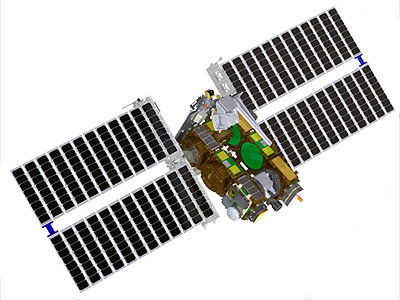Thank you very much for visiting Gunter's Space Page. I hope that this site is useful and informative for you.
If you appreciate the information provided on this site, please consider supporting my work by making a simple and secure donation via PayPal. Please help to run the website and keep everything free of charge. Thank you very much.
Athena

Athena [NovaWurks]
Athena is a joint climate change program between NovaWurks, NOAA, NASA, and the Air Forceís Space and Missile Systems Center will measure solar energy that Earth reflects and absorbs, gathered via a very small telescope attached to a NovaWurks Payload Accommodation Configuration (PAC). Athena will test the quick-turnaround capability of technology that supports more complicated missions
The Athena project will develop, launch and operate an Earth Radiation Budget technology demonstration sensorcraft, which will demonstrate viability of NovaWurks Sensorcraft architecture based on SIMPL and eXCITe to support future USAF/NOAA/NASA missions, serve as a pilot opportunity for transformational activities within LaRC (SPIN, FIREFLY) and across Agencies, demonstrate on-orbit CONOPS and observational capability and serve as a risk reduction opportunity for future Athena+ and DEMETER science missions. The instrument will be a simplified and lighter version of the CERES (Clouds and the Earth Radiant Energy System) instrument, flown on TRMM, EOS-AM 1 (Terra), EOS-PM 1 (Aqua), NPP Suomi and NOAA 20.
NASA/LaRC delivers to NovaWurks the Athena/CERES payload, which consists of an optical module (Single CERES Total Channel sensor), a calibration module (CERES Internal Blackbody) and a sensor electronics assembly (new development).
Originally a launch as a secondary payload on the JPSS 2 mission on an Atlas-5(401) was planned, but it was transferred to the STP-28C mission on a LauncherOne. After LauncherOne dropping out of business, it was transferred to a Falcon-9 v1.2 (Block 5) launch.
| Nation: | USA |
|---|---|
| Type / Application: | Technology |
| Operator: | NovaWurks |
| Contractors: | NovaWurks (prime); NASA/LaRC (payload) |
| Equipment: | Athena/CERES |
| Configuration: | 6 aggregated HiSat satlets |
| Propulsion: | ? |
| Power: | Solar cells, batteries |
| Lifetime: | 1 year |
| Mass: | ~50 kg |
| Orbit: |
| Satellite | COSPAR | Date | LS | Launch Vehicle | Remarks | |
|---|---|---|---|---|---|---|
| Athena | -< | 2024 | Va SLC-4E | Falcon-9 v1.2 (Block 5) | with ? |
References:
- NASA: Athena Overview
- NASA Langley Research Center: Athena
